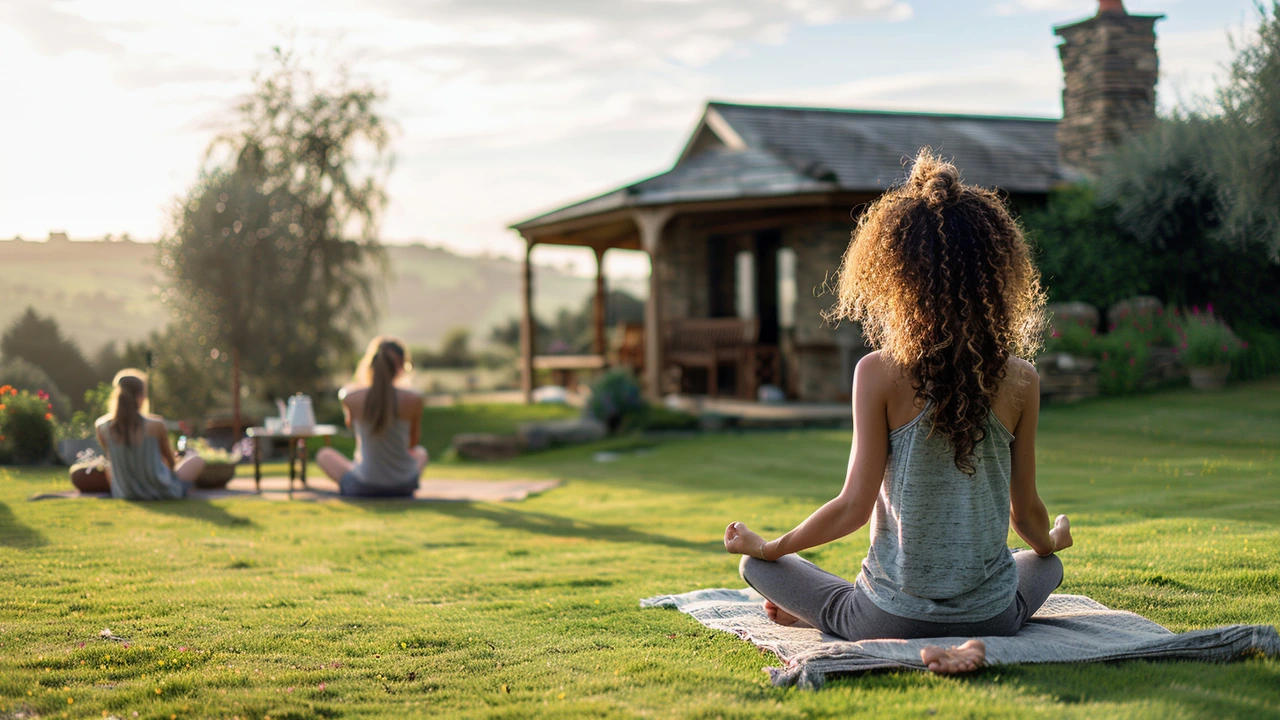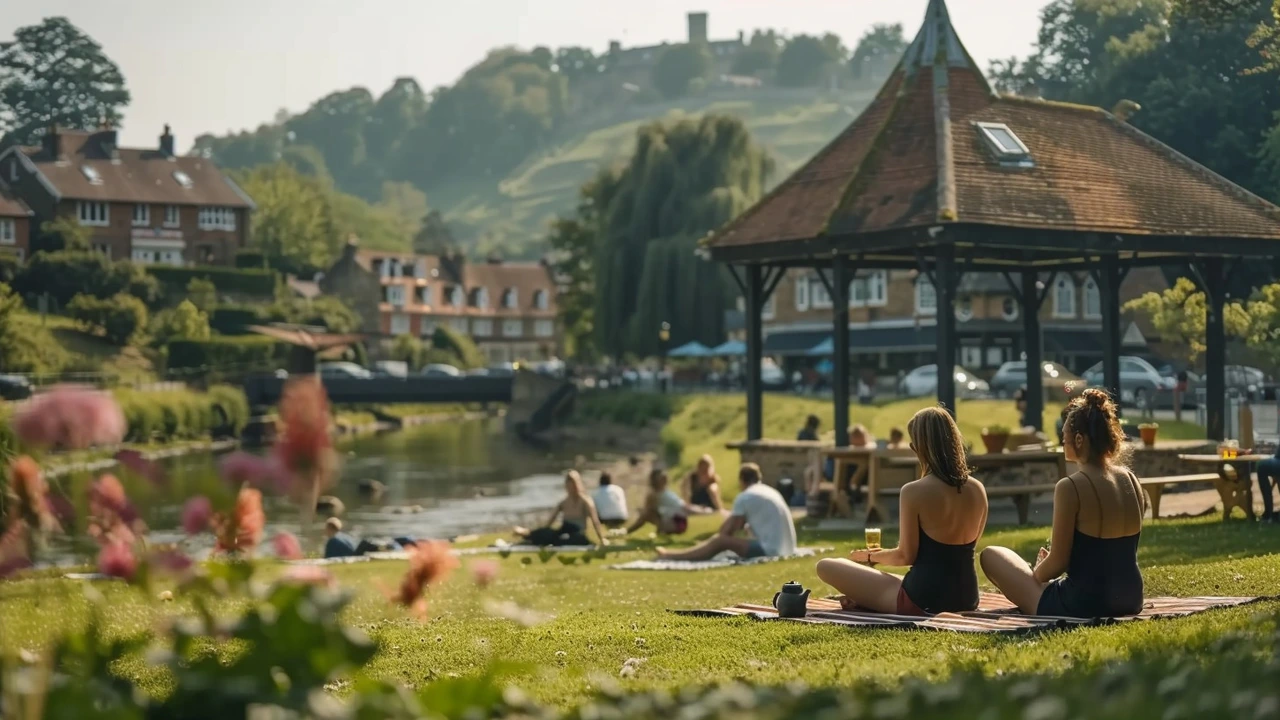In our fast-paced world, finding ways to relax has become crucial for maintaining both mental and physical health. Relaxation techniques aren't just about unwinding; they're about restoring balance in our lives. Whether you're dealing with everyday stress or looking to integrate a regular practice into your routine, understanding how different techniques work can be incredibly beneficial.
- The Need for Relaxation
- Mindfulness and Meditation
- Progressive Muscle Relaxation
- Breath Control Techniques
- Creative Activities for Stress Relief
The Need for Relaxation
Every day, we juggle numerous responsibilities, from work commitments to personal obligations, leaving little room for downtime. This constant juggling act takes a toll on our mental and physical health. The need for relaxation techniques has never been more pressing. According to the American Psychological Association, stress levels in adults have been rising steadily, with 75% of adults reporting physical or emotional symptoms of stress.
Stress is not just a mental state; it has tangible effects on our bodies. Chronic stress can lead to a host of health issues, including heart disease, high blood pressure, diabetes, and other illnesses. The body's stress response, often referred to as the fight-or-flight response, was originally designed to protect us in dangerous situations. However, when this response is triggered too frequently, it can cause significant wear and tear on the body.
"Relaxation techniques can counteract the toxic effects of stress," says Dr. Herbert Benson, a pioneer in mind/body medicine. "They activate the body's relaxation response, which reduces the negative impact of stress on health."
Relaxation isn't a luxury; it's a necessity. Incorporating relaxation techniques into our daily lives can improve our overall well-being and quality of life. It doesn't just benefit us mentally but also physically by reducing tension in the muscles, lowering blood pressure, and slowing the heart rate. These physiological changes help the body to repair and rejuvenate itself.
An intriguing fact is that relaxation techniques can also enhance cognitive functions. When we’re stressed, our cognitive abilities, such as memory and problem-solving skills, can be compromised. Relaxation techniques help in promoting clear thinking and concentration, making us more productive and efficient in our daily tasks.
Moreover, the psychological benefits of relaxation are profound. Regular practice can improve mood, reduce anxiety, and foster a sense of calm and well-being. This doesn’t just improve one’s immediate state of mind; it can lead to long-term emotional resilience. Integrating relaxation into our routines can therefore act as a preventive measure, guarding against mental health conditions like depression and anxiety.
The necessity for relaxation is further emphasized by the impact of our modern lifestyle. With constant connectivity through our gadgets and the demands of modern-day life, the very fabric of our downtime is often interrupted. Creating dedicated time for relaxation ensures we can manage stress effectively. This concept is well-supported by research from John Hopkins University, showing that mindfulness meditation alone can reduce symptoms of depression, anxiety, and pain.
The advantages of relaxation techniques are life-changing. By understanding and valuing the need to relax, we take an essential step towards a balanced and healthier lifestyle. In the upcoming sections, we will delve into specific techniques that you can incorporate into your daily routine, making relaxation an integral part of your life.
Mindfulness and Meditation
Mindfulness and meditation have become highly popular techniques for improving mental well-being. They help individuals focus on the present moment and reduce stress through intentional attention and awareness. Research shows that practicing mindfulness can lower cortisol levels, which is the hormone associated with stress. This makes mindfulness an effective tool for anyone looking to enhance their quality of life.
Meditation, in particular, has roots in centuries-old traditions but has been adapted to fit modern life. One common form is mindfulness meditation, where you sit quietly and focus on your breath while letting thoughts pass without judgment. This practice helps clear the mind and fosters a sense of calm. Many people find even just ten minutes of meditation daily can have profound effects on their mood and stress levels.
One interesting fact is that according to a study by Harvard Medical School, people who engage in meditation show increased gray matter in the brain regions associated with memory, empathy, and sense of self. This means the benefits go beyond just relaxation; they can also improve various cognitive functions.
To get started with mindfulness meditation, consider these steps:
- Find a quiet place where you won’t be disturbed.
- Sit comfortably with your back straight.
- Close your eyes and take a few deep breaths.
- Focus on your breath. Feel the sensation of air moving in and out of your lungs.
- When your mind wanders, gently bring your focus back to your breath without judgment.
- Continue this practice for 10-15 minutes.
Another aspect of mindfulness is its application in daily activities. Known as mindful living, this involves paying full attention to whatever you are doing, whether eating, walking, or even washing dishes. By being fully present, you can turn routine tasks into moments of meditation and stress relief.
"Mindfulness isn’t difficult; we just need to remember to do it." — Sharon Salzberg, a renowned meditation teacher.
Investing time in mindfulness and meditation can yield incredible benefits. This simple yet powerful practice helps break the cycle of stress and fosters a more balanced, fulfilling life. Incorporating mindfulness into your day-to-day routine can be an invaluable tool for managing the stresses of modern living. With consistent practice, you're likely to notice not only an improvement in your emotional health but also a greater enjoyment of life's simple pleasures.

Progressive Muscle Relaxation
Progressive Muscle Relaxation (PMR) is a technique developed in the early 1920s by American physician Edmund Jacobson. This method is based on the premise that mental calmness is a natural result of physical relaxation. Jacobson discovered that by focusing on and systematically relaxing various muscle groups, individuals can significantly reduce stress levels and achieve a state of tranquility.
To practice PMR, follow these steps. First, find a comfortable, quiet place to sit or lie down. Close your eyes and take a few deep breaths. Then, starting with your lower body, tense each muscle group tightly for about five to ten seconds before relaxing them. Pay attention to the contrast between tension and relaxation. For example, start with your toes and work your way up to your legs, abdomen, arms, and finally, your head and neck.
A fascinating aspect of PMR is its impact on both psychological and physiological levels. Research has shown that regular practice can decrease symptoms of anxiety, depression, and insomnia. According to the Mayo Clinic, PMR can also lower blood pressure and reduce muscle tension, making it a valuable practice for those with chronic pain conditions.
"Progressive muscle relaxation is a widely used strategy for reducing stress and promoting physical relaxation," states the American Psychological Association.
One tip for beginners is to use guided audio recordings, which can help you stay focused and ensure you're using the correct technique. Over time, with practice, you'll be able to perform PMR more effectively and independently. While PMR might seem simple, its benefits are profound. Consistently setting aside time for this practice can significantly enhance your overall well-being, providing a sanctuary of calm amidst the chaos of daily life.
Breath Control Techniques
Breathing is one of the most fundamental aspects of life, yet many of us don't give much thought to how we do it. Breath control techniques, sometimes referred to as **breathwork**, tap into this basic function to bring about deep relaxation and mental clarity. By consciously controlling our breath, we can influence the parasympathetic nervous system, which helps to lower stress levels and promote a state of calm.
One popular method is diaphragmatic breathing, also known as belly breathing. This technique involves inhaling deeply through the nose so that your diaphragm - not your chest - inflates with air. To practice this, sit or lie down in a comfortable position and place one hand on your chest and the other on your belly. Take a slow, deep breath in, ensuring that the hand on your belly rises more than the one on your chest. Exhale slowly through your mouth. Repeat this cycle to help induce a state of relaxation. Diaphragmatic breathing not only helps with stress but also improves lung function and reduces feelings of anxiety.
Another simple but effective breath control technique is box breathing, a favorite among athletes and Navy SEALs. To try box breathing, sit upright and ensure your back is straight. Inhale through your nose for a count of four, hold the breath for a count of four, exhale through your mouth for a count of four, and then hold your breath again for a count of four. Repeat this sequence several times. Box breathing helps regulate the autonomic nervous system and can enhance focus and concentration. It's particularly useful in high-pressure situations.
For those looking for a mix of creativity and relaxation, alternate nostril breathing is an enticing option. This technique involves closing one nostril and inhaling through the other, then switching nostrils. Start in a comfortable seated position and use your thumb to close your right nostril. Inhale deeply through your left nostril, then close the left nostril with your ring finger, open the right nostril, and exhale through it. Continue alternating for several minutes. This method balances the left and right hemispheres of the brain, fostering mental equilibrium and a calm state of mind.
"I have found that among its other benefits, giving liberates the soul of the giver." - Maya Angelou
Incorporating breath control techniques into your daily routine doesn't require a lot of time or equipment. Even just ten minutes of guided breathing exercises can have a significant impact on your well-being. Apps like Calm or Headspace offer guided sessions that can help you get started. With consistent practice, breath control can become a powerful tool for managing stress, improving focus, and enhancing overall health and well-being.

Creative Activities for Stress Relief
Engaging in creative activities can be a powerful way to alleviate stress. These activities allow us to temporarily escape from the pressures of daily life and immerse ourselves in a world where our imagination is the only limit. One of the most effective ways to harness the benefits of creativity is through art therapy. This technique involves using drawing, painting, or sculpting to express emotions and relieve tension. Art therapy has been shown to decrease cortisol levels, the hormone associated with stress, making it a compelling option for anyone seeking mental calmness.
Music also offers a unique form of creative relief. Playing an instrument or simply listening to your favorite tunes can elevate your mood significantly. Studies have shown that music therapy can lead to reduced anxiety and improved emotional well-being. In fact, a study conducted by the American Music Therapy Association found that 79% of participants experienced reduced stress levels after engaging in music-related activities.
Writing is another powerful creative outlet for stress relief. Journaling about your thoughts and feelings can be cathartic, helping you process emotions and gain new perspectives. Many people find solace in poetry or short story writing, as it provides a structured way to channel complicated feelings. As writer Dani Shapiro once said,
"Writing has so much to give, so much to teach, so many surprises. That thing you had to force yourself to do—the actual act of writing—turns out to be the best part."
Cooking and baking are also fantastic ways to unwind. The process of following a recipe can be meditative, and the reward of a delicious meal adds an extra layer of satisfaction. The act of cooking not only engages your hands but also your mind, offering a sensory experience that can distract you from stress. According to the Journal of Positive Psychology, individuals who engage in creative cooking report increased happiness and relaxation.
Gardening can provide both physical activity and a sense of connection to nature, both of which are key in reducing stress. Planting flowers, growing vegetables, or simply tending to houseplants can be incredibly fulfilling. A study published in the Journal of Health Psychology found that people who garden regularly have lower levels of the stress hormone cortisol and improved moods.
If you're looking for a blend of physical activity and artistic expression, consider trying dance. Dance not only provides a thorough workout for the body but also enhances emotional well-being. According to research published in the American Journal of Dance Therapy, participants in dance classes report significant reductions in anxiety and stress. Whether it's ballet, hip-hop, or just dancing around your living room, the act of moving to music can be incredibly liberating.
These creative activities provide an array of options to manage stress effectively. Whether you choose to paint, write, cook, garden, or dance, the key lies in finding a form of creative expression that resonates with you. When incorporated into daily life, these activities can not only help you cope with stress but also enrich your overall well-being.
